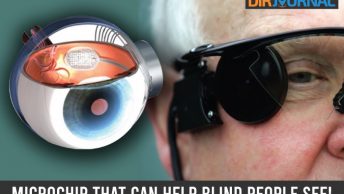Prevention is better than cure! This may very soon become true for thousands of patients with chronic conditions. Next generation healthcare revolves around new technologies that make it possible for patients to receive healthcare from anywhere, without the need for proactive intervention.
Today, there are blood pressure cuffs that enable us to take our readings without having to visit a doctor’s office. There are home cholesterol monitoring devices, home ECG units, swallowable devices, embedded devices and shirts.
Let us take a look at some of the latest trends that bring us convenience, comfort, safety and security.
Externally Placed Health Gizmos
Wearable gizmos that track your health at all times of the day or night is one of the latest trends. Some of these devices even have the capability of sending data to other devices. A blue-tooth enabled biosensor wristwatch from Exmocare tracks the pulse of the wearer, monitors the heart rate changes as well as skin conductance. As if these features are not enough to make it an excellent life saver, it can also monitor the location and the activity level of the user through an accelerometer and GPS.
Another company that is currently coming up with wearable technologies for health is BodyMedia. Their SenseWear armbands can track the level of physical activity, energy used, number of steps taken and the sleep and awake states. This device creates easy to understand graphs on a computer.
Delivering Drugs Internally
Imagine the beauty of being able to deliver drugs internally. Something like this could make a huge difference and improve the quality of life. Debiotech is a Swiss company that has come out with an Insulin Nanopump that is placed outside the body but is designed in such a way that it delivers the required amount of insulin to a diabetic on a regular basis.
This device has an insulin reservoir but is small enough to be kept hidden under clothes.
Researchers hope that it functions as an artificial pancreas when used in conjunction with a proper glucose monitoring system or CGM, you can do some more reading if you are asking what is CGM?
Diabetics also have the choice of an implanted chip, the size of less than a quarter, that controls the release of all types of drugs into the body over long periods of time. This has been developed by MicroChips. This chip can take remote wireless signals that work as cues to deliver drugs.
Prosthetics That Understand
Prosthetic legs and arms have been around for a long time but the convenience of using them has never been better than it is now. While previously, the device would not be under the owner’s control, today technology has infused intelligence into prosthetic devices.
The Center for Restorative and Regenerative Medicine in Rhode Island and the Defense Advanced Research Projects Agency (DARPA) which is under the control of the federal government, are both in the process of funding research on artificial limbs that can actually receive and implement orders from their owners.
Currently, there are artificial legs that work with microprocessors and hydraulics but in the future, all it will take is to “think” to directly control prosthetic devices from the brain of the owner. These prosthetics are said to fuse to the bone.
The Nanobot
Researchers are predicting that nanobots that understand all about our genes, will be able to repair and reengineer our bodies. These robotic devices may be tiny but have the potential to extend life. They also believe that diseases such as heart disease and cancer may be eradicated in fifteen to twenty years.
Most of us take the web for granted for providing all sorts of valuable technological resources. However, if there is one area that is not as well-known as others is the health field. You will find dozens of archives of surgeries as well as live surgeries such as craniotomies that can be viewed online. You can learn all about the latest and major breakthroughs in medicine that can help save millions of lives throughout the world.
There are hundreds of emerging health technology trends that can change patient’s lives and the face of medicine. The best part is that most of them are affordable and can be used by a large number of patients.












